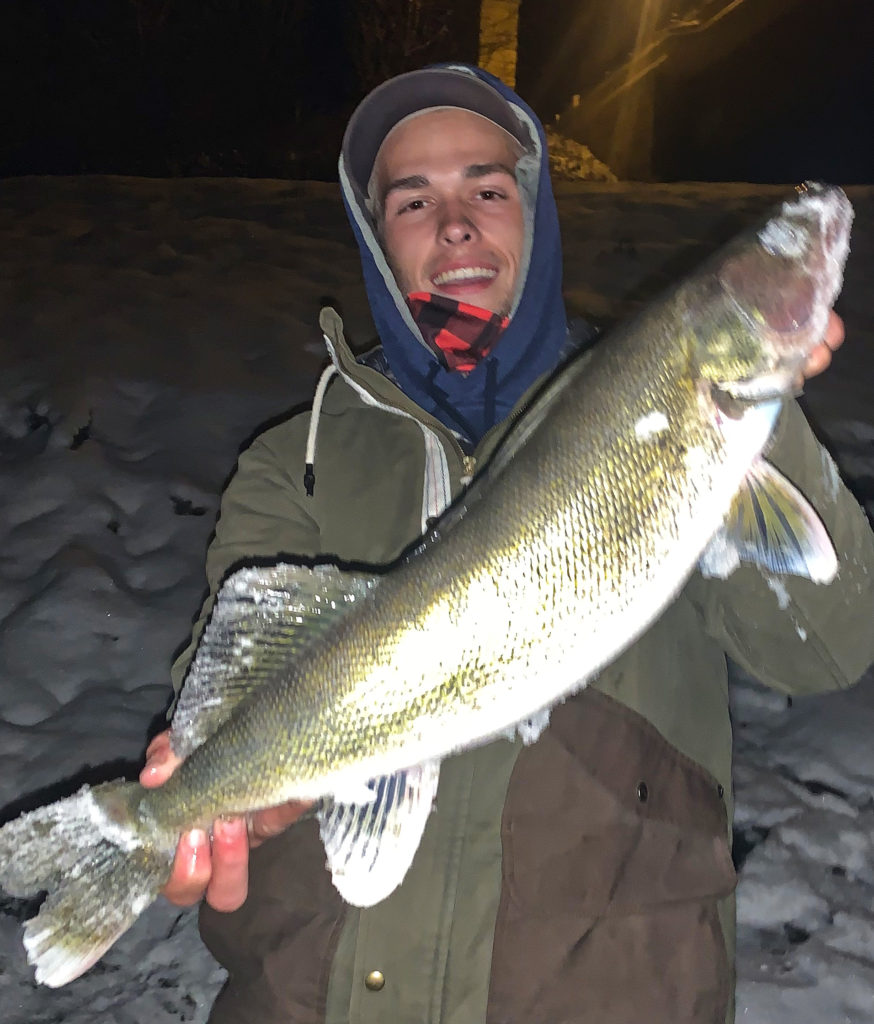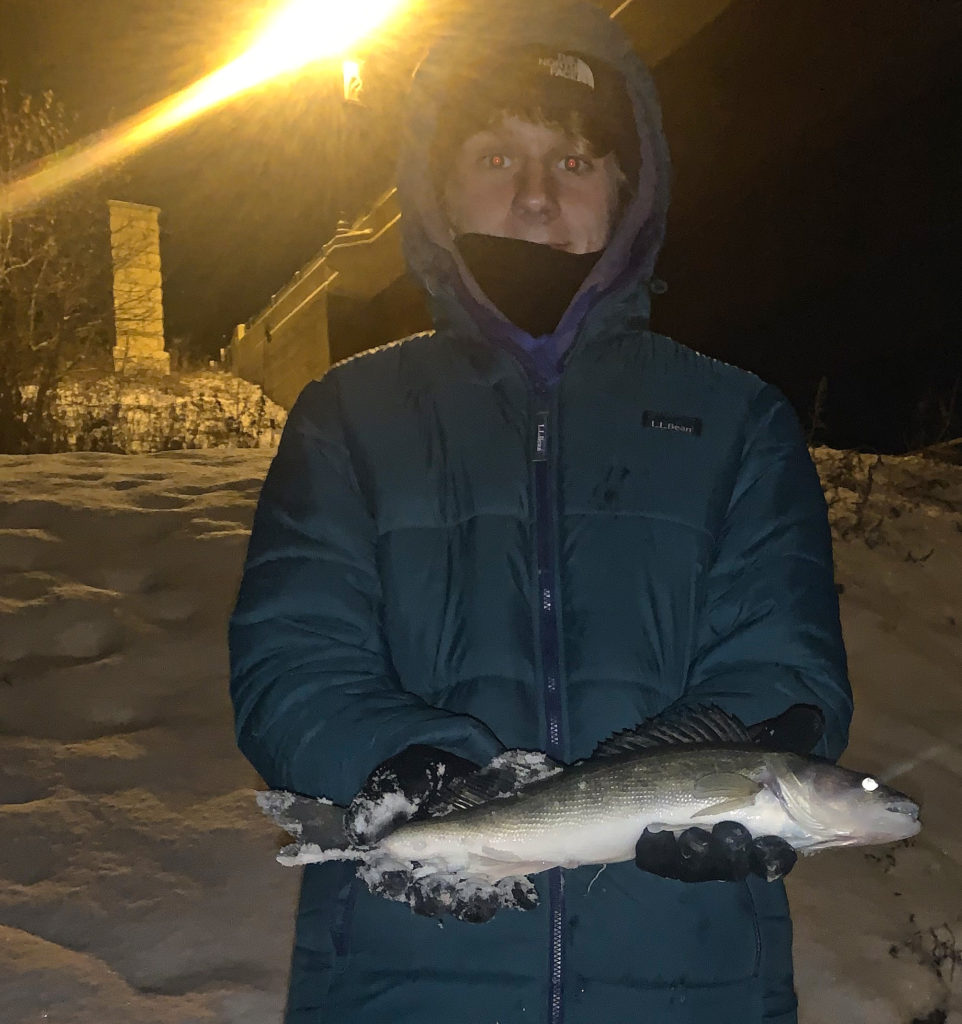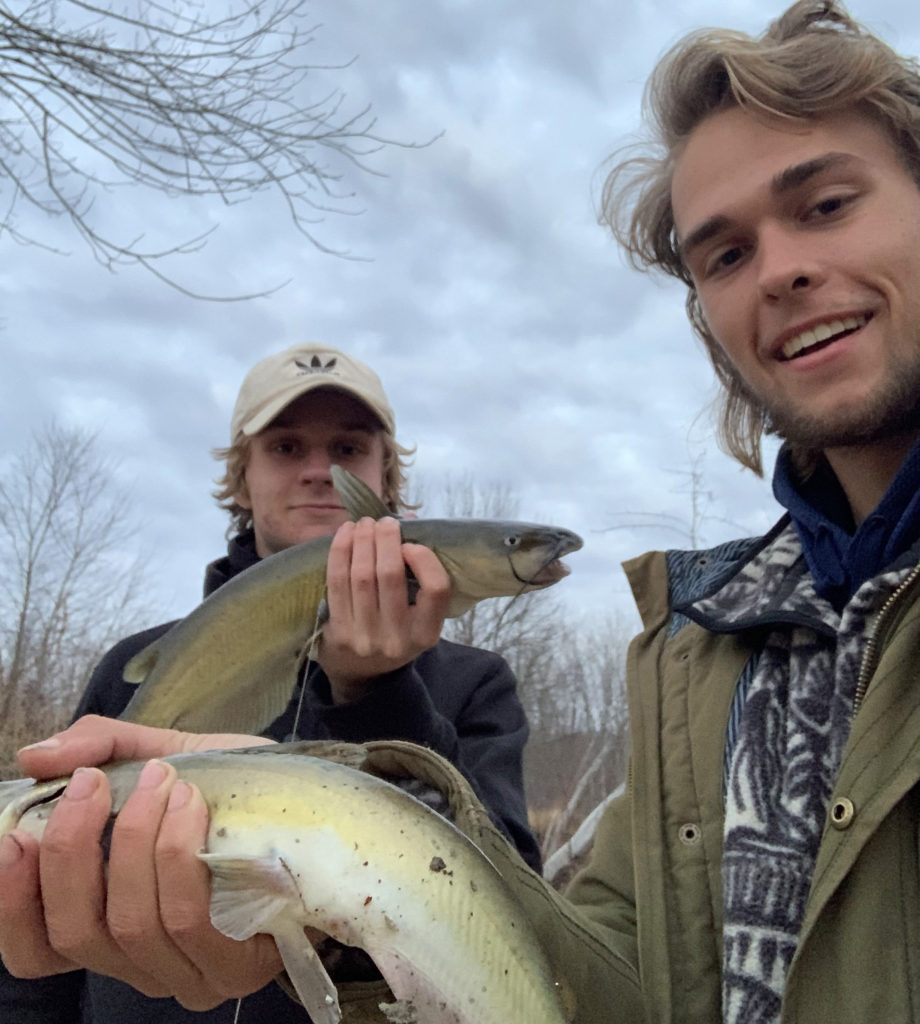“Fish all Fifty.” It might be an understatement to say that’s a rather big goal, sort of like trying to actually shoot the moon.
Two 18-year-old Virginia men have embarked on the mother of all road trips. With their secondary education plans sidetracked by COVID-19, Luke Konson and Daniel Balserak of Virginia hit the road with the lofty goal of catching the state fish of every state in America. Instead of sitting in front of computer screens, they’re staring through the windshield of a “commandeered” family minivan as the miles go by on their “Fish All Fifty” trip.
The buddies graduated high school in June, and they were planning to enroll this fall at Clemson University in South Carolina. However, because the year started with all online education, they didn’t want to spend any more time sitting in front of computer screens. Because they’d taken the last couple months of their senior year online, Luke Konson said, “We didn’t love it.”

“We both decided to defer our admissions to the fall of 2021,” Konson said on the phone from Mississippi. “We were trying to decide what to do in the meantime and didn’t want to sit at home for a year. Travelling was a little more difficult because of COVID-19 restrictions.
“While we were trying to make that decision, I happened to be fishing with my family in North Carolina,” he recalled. “So, fishing was on our minds at the time. The idea hit us to travel to all 50 states and, because we love to fish, we wanted to catch every state fish. As far as we can tell, no one has ever accomplished that task.”
Their most recent conquest was catching the Mississippi state fish, a largemouth bass, and the duo was halfway to accomplishing their mission. He says several of the state fish they’ve caught so far were challenging.
“We had to catch a muskie in Wisconsin,” Konson said. “That’s a seriously cool fish, and it’s hard to catch. One of the things we do is if we’re in a state trying to catch a fish that we aren’t familiar with, I’ll go into Facebook groups to tell people what we’re doing and get some advice. The interesting thing is we often get people reaching out to us and offering to take us fishing.”

The variety of fish has been an especially-interesting part of the trip. The boys caught Atlantic Salmon on a road trip to Maine. Several states feature Brook Trout as their state fish. Konson says anytime they’ve gotten to catch a fish they aren’t familiar with was a “really cool experience.” They each caught a Guadalupe Bass, a fish found only in Texas.
They’ve been fishing in the Midwest as well. Iowa, Nebraska, Missouri, and Kansas all named Channel Catfish as their state fish. It’s one fish the duo knows a lot about as they go after catfish in Virginia. They caught walleye on the Minnesota River near Belle Plaine, Minnesota, and Channel Catfish on the Racoon River in Iowa.
“Our first road trip was a loop through the Northeastern states,” he said, “including Maine. We wanted to grab an American Shad in Connecticut, but it was out of season, so we’ll head back there to get one of those. We also hit New York, Pennsylvania, and West Virginia.”
Tennessee, Kentucky, Ohio, Wisconsin, Minnesota, and Iowa were next on the list, through the Midwest states, and then into Texas. While on the phone for this interview, Luke and Daniel were traveling through the Southeastern States.

While they don’t usually do the “tourist things” on their trips, one of the best parts of the “Fish All Fifty” road trip is the places they fish in are some of the most scenic areas in the country. “For example, we went fishing for Brook Trout in the Upper Peninsula of Michigan, and it’s beautiful up there,” Konson said. “Fishing for salmon in the wilderness of Maine was amazing.”
They do intend to do a little more sightseeing when the pair heads west. Konson mentioned seeing Yellowstone National Park, Yosemite National Park, as well as the Grand Canyon.
While the price of gas might be as low as it’s been in years in many states, it still adds up quickly when road tripping through every state in the Union. Combine that with food and other incidental costs, the price tag adds up quickly. The next logical question is how they’re financing an adventure like this. While they had a little money saved up for college they didn’t want to burn through, the boys turned to the generosity of others.
“We set up a GoFundMe page, which is where most of our funding is coming from,” he said. “People have been supporting us on GoFundMe, which has been super helpful for us. A lot of those people on GoFundMe, as well as the people we meet face-to-face, tell us the trip is a great idea, and they wish they’d done it themselves.”

With a laugh, Luke said, “I think a lot of people are living out the trip they wanted to take through us.”
The biggest surprise of the road trip so far? “I don’t think we were quite ready for the cold when we headed north,” Konson said. “Six inches of snow fell on our first day in Minnesota. That’s not something we deal with an awful lot where we live.”
Two 18-year-olds likely don’t set a big goal like this without support from their families and friends. However, that doesn’t mean family members weren’t a little skeptical of the idea when they first brought it up.
“It took a little convincing at first,” he said with a laugh, “but we got it done. I think they’re happy for us because we’re getting some good life experiences and learning a lot of things through our travels. We’re seeing a lot of things and meeting a lot of people we likely wouldn’t get to know while sitting in a dorm room watching online classes.”
Their tentative plan is to be home a couple of weeks over the Christmas holiday. They may squeeze in a quick trip to the Carolinas and Georgia, which aren’t too far from home.
Here’s the link to their Go Fund Me page if you want to chip in for gas to help the boys complete what really is a once-in-a-lifetime trip.
https://www.gofundme.com/f/catching-the-state-fish-in-each-state




